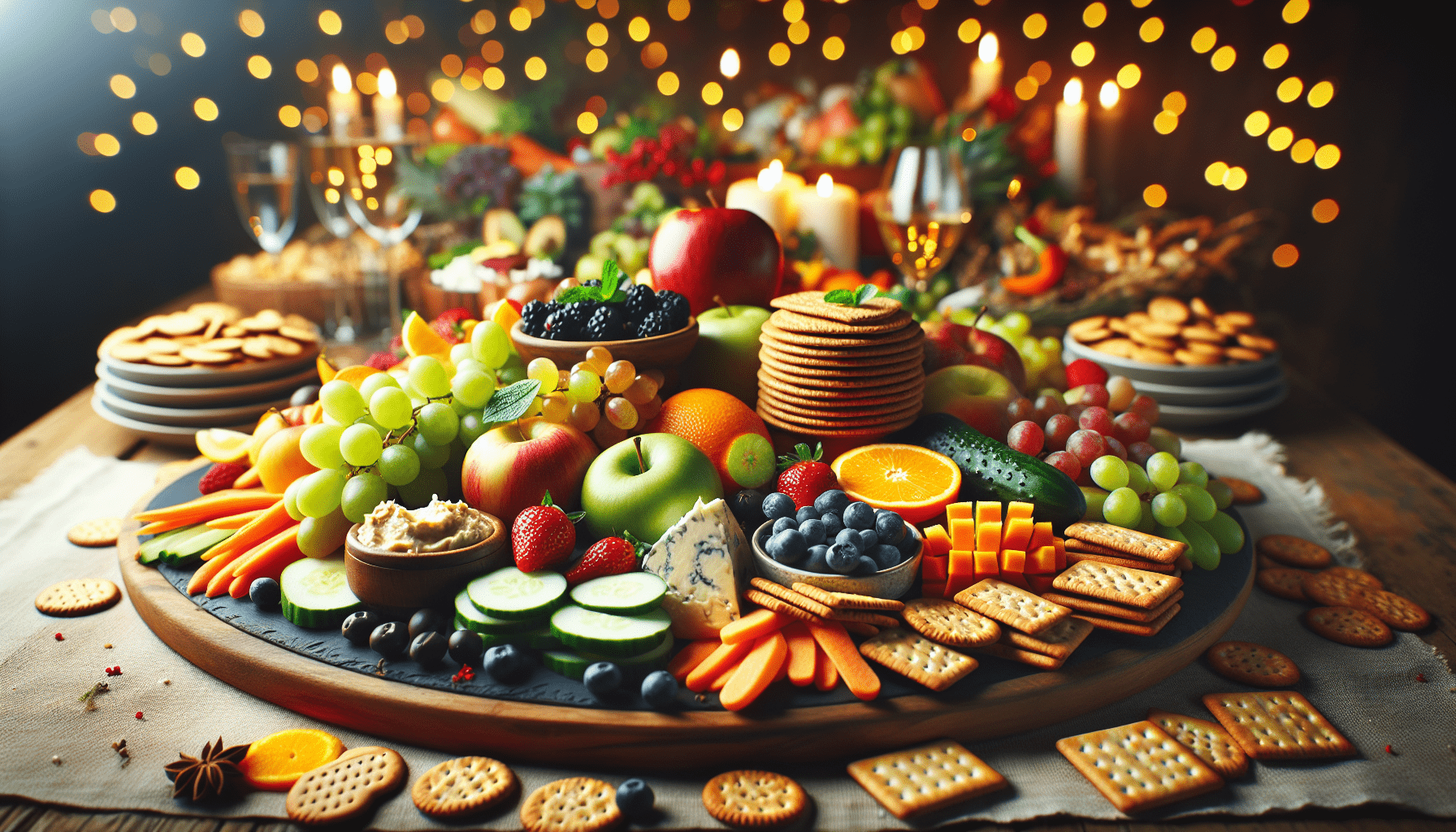Are you planning a party but worried about accommodating guests with food allergies? It can be a bit overwhelming to ensure everyone can enjoy the food and drinks without any concerns. This guide will help you navigate through the most popular allergy-free food and drink options for parties, making your event a success without compromising on taste or safety.

Understanding Common Allergens
Before diving into specific food and drink options, it’s crucial to understand the common allergens and what they entail. This knowledge will help you make informed decisions and avoid common pitfalls.
Top Eight Allergens
The U.S. Food and Drug Administration (FDA) identifies eight major food allergens that are responsible for most allergic reactions:
- Milk
- Eggs
- Fish
- Shellfish
- Tree nuts
- Peanuts
- Wheat
- Soybeans
Cross-Contamination Concerns
Even if a food itself doesn’t contain allergens, it’s important to consider cross-contamination. This happens when allergens are transferred from one food to another. Always prepare and store allergy-friendly foods separately.
Allergy-Free Food Options
Now, let’s get into the nitty-gritty of what you can serve at your party.
Fruits and Vegetables
Fruits and vegetables are some of the safest options for guests with food allergies. They are naturally free of common allergens and are extremely versatile.
Fresh Fruit Platters
A beautifully arranged fruit platter can be a hit at any party. You can include:
- Apples
- Oranges
- Grapes
- Berries (strawberries, blueberries, raspberries)
- Pineapple
- Melons (cantaloupe, honeydew)
Veggie Platters
Veggie platters are another great option. Include a variety of vegetables like:
- Carrots
- Celery
- Bell peppers
- Cherry tomatoes
- Cucumber slices
Consider serving these with dips like hummus, which can be made free of common allergens.
Meat and Protein Options
Protein is essential for any party menu, but you need to be cautious about potential allergens.
Grilled Meat and Kabobs
Grilled meat such as chicken, beef, and turkey can often be prepared without allergens. Kabobs are easy to customize and can include a variety of meats and vegetables.
Allergy-Free Meatballs
Traditional meatballs often contain breadcrumbs, which can be a problem for gluten and wheat allergies. Instead, you can use oats or gluten-free breadcrumbs.
Breads and Grains
Finding allergy-free bread and grain options can be a bit more challenging, but it’s certainly doable.
Gluten-Free Bread and Crackers
Many stores now offer gluten-free bread and crackers. Be sure to read labels carefully to avoid other allergens like soy and milk.
Rice and Quinoa Dishes
Rice and quinoa are naturally gluten-free and can be used in various dishes, from salads to main courses.
Allergy-Free Drink Options
What party is complete without drinks? Here are some options that are typically free of common allergens.
Fresh Juices and Smoothies
Freshly squeezed juices and homemade smoothies can be customized to avoid allergens. Consider offering a variety of flavors like:
- Orange juice
- Apple juice
- Berry smoothies
- Green smoothies
Herbal Teas and Infused Waters
Herbal teas and infused waters are generally free of common allergens. Offer a selection of flavors to suit different tastes.
Non-Alcoholic Beverages
For a more festive touch, consider these non-alcoholic options:
- Sparkling water with fruit slices
- Lemonade
- Iced tea
Allergies and Alcohol
If you plan to serve alcohol, be cautious. Some alcoholic beverages contain allergens, such as beer (gluten) and certain liqueurs (milk and nuts). Stick with options like wine and distilled spirits that are less likely to contain allergens.
Planning and Preparation Tips
Now that you know what foods and drinks to include, let’s go over some planning and preparation tips to ensure everything goes smoothly.
Label Everything
Clearly label all the foods and drinks. This helps guests quickly identify what they can safely consume.
Separate Preparation Areas
If possible, use separate preparation areas for allergy-friendly foods to avoid cross-contamination.
Communicate with Guests
Ask your guests about their allergies in advance. This will help you better plan your menu and avoid any last-minute surprises.
Store-Bought vs. Homemade
Sometimes, store-bought allergy-free options can be more convenient, but always read labels diligently. Homemade dishes allow for more control over ingredients, which is crucial for avoiding allergens.

Sample Allergy-Free Menu
To make things easier, here is a sample menu that avoids the top eight allergens:
| Course | Dish |
|---|---|
| Appetizers | Fresh fruit platter, veggie platter with hummus |
| Main Course | Grilled chicken kabobs, quinoa salad, allergy-free meatballs |
| Sides | Gluten-free bread, rice pilaf |
| Beverages | Sparkling water, fresh orange juice, herbal teas |
| Dessert | Fruit salad, dairy-free sorbet |
This menu offers a variety of flavors and textures, ensuring that everyone can find something they enjoy.
Alternative Ingredients for Common Allergens
Sometimes, you might need to modify recipes to make them allergy-friendly. Here are some common ingredient substitutions:
Milk
- Dairy-Free Alternatives: Almond milk, coconut milk, oat milk, rice milk
Eggs
- Egg Replacements: Apple sauce, mashed bananas, chia seeds, flax seeds
Wheat (Gluten-Free)
- Flour Alternatives: Almond flour, coconut flour, gluten-free flour blends
Soy
- Soy-Free Options: Coconut aminos (instead of soy sauce), sunflower seed butter
Nuts
- Nut-Free Alternatives: Sunflower seeds, pumpkin seeds
Understanding Food Labels
Reading food labels is crucial when it comes to managing food allergies. Here are some tips to make sense of them:
Allergen Statements
Most packaged foods in the U.S. will have allergen statements that indicate the presence of any of the top eight allergens.
Ingredients List
Pay close attention to the ingredients list. Sometimes, allergens can be hidden under different names. For instance, casein is a protein found in milk.
“May Contain” Statements
Be cautious of products that have “may contain” statements. This indicates potential cross-contamination in the manufacturing process.
Catering to Specific Allergies
Now, let’s go into a bit more detail on how to cater to specific food allergies.
Dairy-Free Options
For dairy-free options, consider:
- Using plant-based milks and cheeses (e.g., almond milk, coconut milk yogurt).
- Choosing desserts like sorbet or fruit salads over traditional dairy-based options.
Egg-Free Options
When cooking for egg allergies:
- Use egg replacers or simply avoid recipes that call for eggs.
- Many baked goods can be made egg-free with substitutes like apple sauce or mashed bananas.
Gluten-Free Options
To cater to gluten-free diets:
- Use gluten-free grains like rice and quinoa.
- Choose gluten-free pasta and bread options.
Nut-Free Options
For nut allergies:
- Focus on seeds like sunflower and pumpkin as alternatives.
- Be extra cautious with desserts and snack foods, as nuts are common ingredients.
Emergency Preparedness
Despite your best efforts, there’s always a small risk of an allergic reaction. Be prepared to respond quickly and effectively.
Know the Symptoms
Common symptoms of an allergic reaction include:
- Hives or rash
- Swelling of the face, lips, or tongue
- Difficulty breathing
- Stomach pain, nausea, or vomiting
Have an Action Plan
Ensure that you have an action plan in place, which includes:
- Having antihistamines available
- Knowing how to use an epinephrine auto-injector (EpiPen) if a guest has one
- Knowing emergency contact numbers and the nearest hospital location
Final Thoughts
By now, you should feel more confident about hosting a party that accommodates guests with food allergies. The key is to be informed, prepared, and considerate. With careful planning and a bit of creativity, you can create a delicious and safe menu that everyone will enjoy.
Remember, hosting an allergy-free party doesn’t mean you have to sacrifice flavor or variety. In fact, many of these allergy-free foods and drinks are so tasty that they might just become your new favorites!
Feel free to ask your guests for feedback after the event. This will help you improve and refine your menu for future gatherings.
Whether it’s a big celebration or a small get-together, having allergy-free options shows your guests that you care about their well-being. Happy hosting, and may your parties be filled with joy and safe, delicious food!
